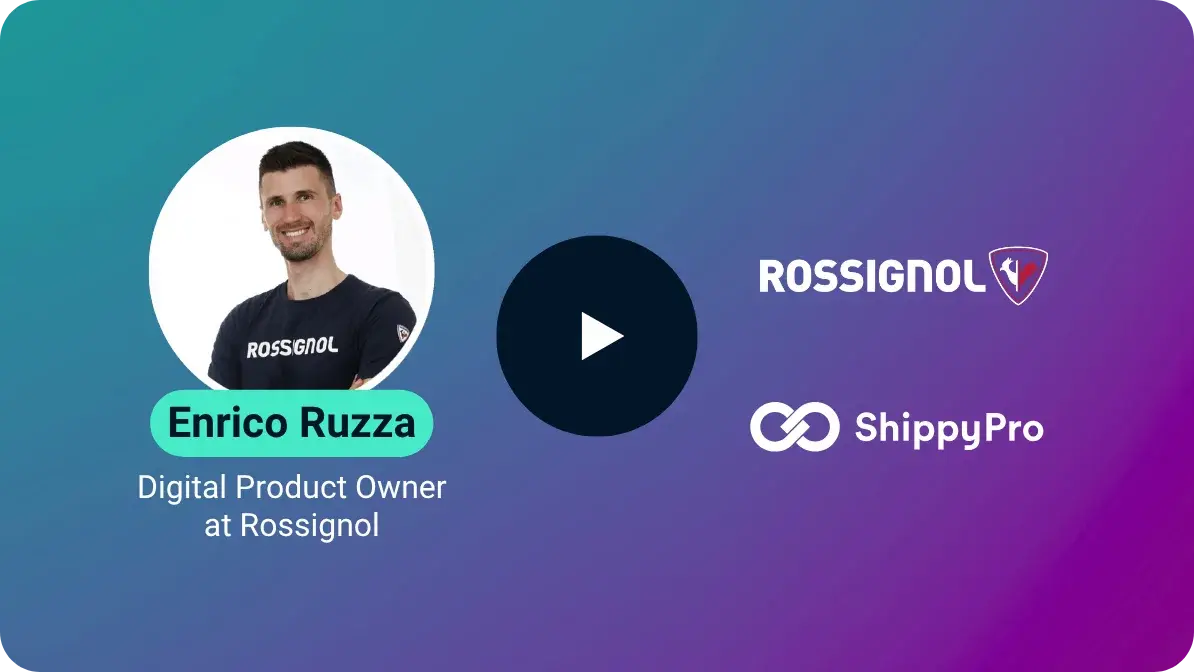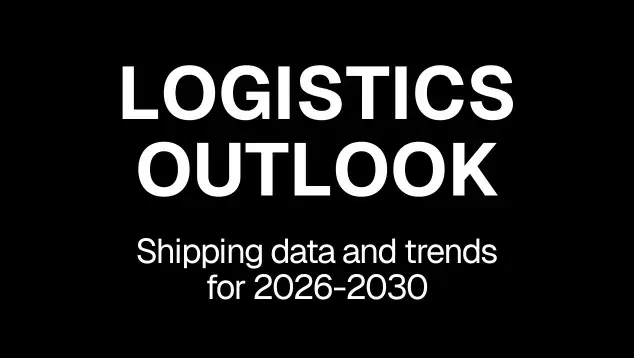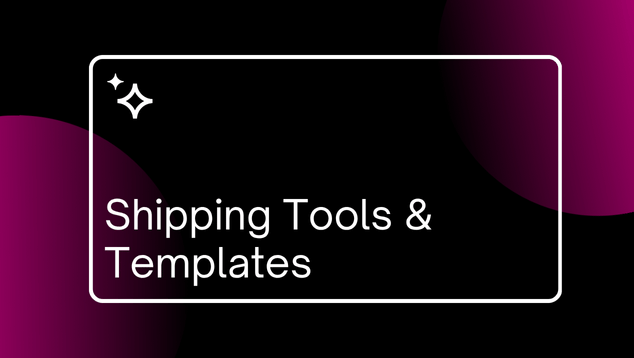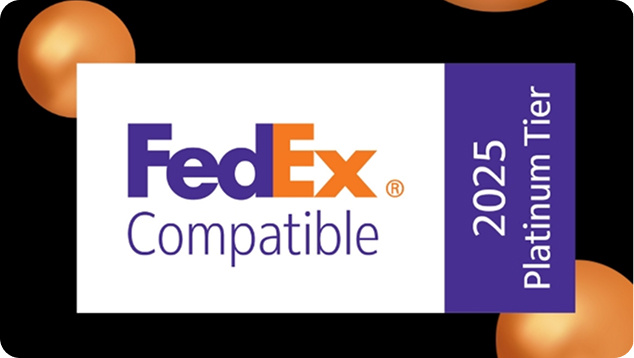Decoding Q-Commerce: guide to quick commerce for companies
 The world of commerce is undergoing an epochal revolution with the rise of Quick Commerce, also known as q commerce. This new approach is profoundly changing the way companies relate to their customers, allowing them to meet consumer needs in virtually real time.
The world of commerce is undergoing an epochal revolution with the rise of Quick Commerce, also known as q commerce. This new approach is profoundly changing the way companies relate to their customers, allowing them to meet consumer needs in virtually real time.
In this article, you will discover what Quick Commerce is, its origins and evolution, the advantages it offers companies, the technologies that have enabled its growth, as well as the challenges companies face in adopting this approach.
You'll also get a glimpse into the future of Quick Commerce, what the emerging trends are, and how businesses can successfully embrace this revolution.
What is Quick Commerce?
Quick Commerce, also known as Q-Commerce or QC, is based on the concept of delivering a product as quickly as possible, generally in less than an hour. This phenomenon began with food delivery, which still represents the largest portion of the business.
This is a relatively new concept in the world of e-commerce and commerce in general.
This approach is closely related to the concept of "on-demand delivery", but with an even greater emphasis on speed and efficiency.
Therefore, Quick Commerce allows customers to order products, food or other services and receive them extremely quickly, often in less than an hour. But how do you get such an efficient service?
This speed is possible thanks to the intelligent use of technologies, the digitalisation of processes and the optimised management of logistics, topics which we will delve into further on.
In the meantime, let's see how this phenomenon began.

Origins and evolution of Quick Commerce
Quick Commerce has its roots in the exponential growth of ecommerce and home delivery in recent years. As consumer expectations for shorter delivery times increase, many companies have begun exploring ways to reduce wait times.
One of the precursors of Quick Commerce was the "dark kitchen" or "ghost kitchen" business model.
These kitchens worked without a physical restaurant, focusing exclusively on food preparation and home delivery.
This idea demonstrated that consumers are willing to pay a higher price to have food delivered directly to their home, obviously as long as the delivery is fast and the food has the same quality as if they were in a restaurant.
With home delivery apps like Uber Eats, Glovo or Deliveroo, the idea of having food and other products delivered to people’s houses has become increasingly popular. These platforms played a key role in the development of Quick Commerce, as they demonstrated with clear and transparent data that the demand for fast delivery was not only widespread, but also constantly increasing.
The Quick Commerce Boom
Quick Commerce has exploded over the past few years, attracting numerous companies to this rapidly growing sector.
Companies like Glovo, Rappi, Gorillas, Macai, and GoPuff are revolutionising the way people shop and obtain consumer goods.
This boom was fueled by a combination of factors. Firstly, the widespread reliance on smartphones and high-speed Internet connections paved the way for a revolution in the shopping process, based on the idea of quickly and intuitively ordering products through dedicated apps.
Secondly, the Covid-19 pandemic has accelerated the need for safe ways to shop and receive products without leaving the house.
And like many other technological revolutions that experienced a surge due to Covid-19, Quick Commerce also shows no signs of stopping, undeterred by the pandemic’s diminishing impact.

Advantages of Quick Commerce for businesses
Quick Commerce offers plenty of advantages to companies that adopt it. Here are some of the main ones:
- Increased customer satisfaction: Quick Commerce allows businesses to meet customer needs more quickly and efficiently, improving their overall experience.
- Greater operational flexibility: Companies can quickly adapt their operations to respond to fluctuations in demand, thus becoming more responsive to market needs.
- Reduced storage costs: Since Quick Commerce often implies shorter delivery times, companies can eliminate the need to maintain large warehouses and high storage costs.
- Market expansion: Businesses can reach a broader customer base, including those customers for whom instant delivery is critical.
- Detailed customer data: Companies can collect valuable data on customer purchasing behaviour, allowing them to further personalise their offerings and improve customer loyalty.
Technologies behind Quick Commerce
The success of Quick Commerce is directly connected to the integration of advanced technologies.
Some of the key technologies that support Quick Commerce include:
- Mobile apps: Mobile apps allow customers to place orders, track delivery, provide real-time feedback in an intuitive, quick, and convenient way.
- Artificial intelligence: AI is used to optimise delivery operations, plan efficient routes, and predict customer demand.
- Advanced logistics: Advanced supply chain management systems enable rapid and reliable distribution of products.
- Big data and advanced analytics: Data analytics allows companies to better understand customer behaviour and make more informed decisions.
- Transaction security: Online financial transactions must be secure and encrypted to protect customer data
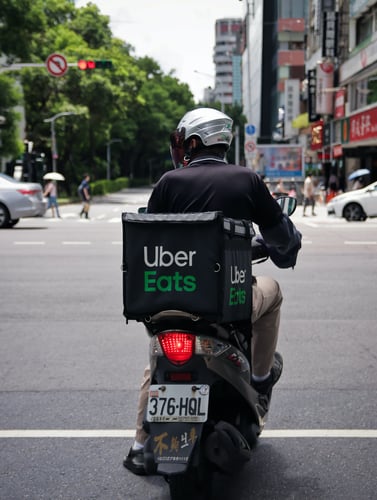
Quick Commerce platforms
In the world of Quick Commerce, some platforms and applications stand out as industry leaders, offering a variety of services for businesses and consumers.
The main Quick Commerce apps currently in circulation are:
- Deliveroo: Deliveroo is an online food delivery company founded in 2013 that operates in more than 500 cities.
- Delivery Hero: Delivery Hero is a startup based in Berlin, operating in over 70 countries, which allows customers to order and receive food and other products extremely quickly.
- Glovo: Glovo is a global on-demand delivery app that delivers food, medicine, groceries, and lots more in a few minutes.
- Uber Eats: Uber Eats is a food ordering and delivery app launched by the giant Uber in 2014.
- DoorDash: DoorDash is an online meal delivery service that offers on-demand delivery and pickup to businesses and customers.
- Gorillas: Gorillas, a German startup, is among the main players in Quick Commerce for food delivery.
- Macai: Macai, a startup based in Milan, presents itself as the evolution of the traditional local supermarket, allowing you to do your shopping online and have it delivered to your home in just a few minutes.
- Instacart: Instacart is an American company known for delivering groceries from local supermarkets directly to consumers.
- Colvin: Colvin is an app that facilitates deliveries from independent flower growers directly to customers' homes.
- Rappi: Rappi is a Latin American app that offers a wide range of delivery services, including food, medicine, and groceries.
- GoPuff: GoPuff is an app that specialises in the delivery of snacks, drinks, electronic products, everyday products and much more.
The importance of logistics and digitalisation
Logistics and digitalization are crucial aspects of Quick Commerce success.
In summary, logistics improvement requires optimised route planning, real-time tracking of shipments, and warehouse management. At the same time, digitalization helps improve visibility and control over these processes, allowing companies to save time and resources.
Let's find out more about the two pillars of Quick Commerce.
Quick Commerce logistics processes
Logistics is the beating heart of Quick Commerce. Efficient logistics management is crucial to ensure that products are delivered timely and safely to customers.
Here are some key aspects of Quick Commerce logistics:
- Optimised route planning: In the q-commerce market, fast delivery is essential. Companies need to plan routes for their drivers, in order to reduce delivery times. Advanced algorithms help determine the most efficient routes, analysing real-time traffic, and road conditions.
- Real-time tracking: Real-time tracking of shipments allows companies to have a constant view of the location of their drivers and the progress of deliveries. This not only increases transparency for customers, but also allows prompt action to be taken in case of delays or problems.
- Warehouse management: warehouse management is fundamental in Quick Commerce. Items must be readily available and easily accessible to ensure prompt delivery. Warehouses must be efficiently organised and integrated with advanced supply chain management systems.
- Driver coordination: Managing your workforce, especially drivers, is a critical part of logistics. Companies need to effectively plan everything to ensure drivers are available when needed and follow pre-arranged routes efficiently.
- Inventory and replenishment management: To avoid delays and interruptions in deliveries, companies must carefully manage inventory, ensuring that there are always enough products ready to be delivered.

Digitalisation in Quick Commerce
Digitalisation is closely related to logistics in Quick Commerce. Digitalisation refers to the use of digital technologies to automate and optimise business processes.
Here's how digitalisation is crucial for Quick Commerce:
- Process automation: automation allows companies to manage delivery operations more efficiently. This includes automating order processing, shipment tracking, and inventory management. This technology reduces human errors and increases overall efficiency.
- Apps and digital platforms: Apps are a key element of Quick Commerce, allowing customers to place orders and track deliveries quickly and intuitively.
- Big data and advanced analytics: Data collection and analysis are key to understanding customer behaviour, optimising operations, and improving service quality. Data allows companies to make evidence-based decisions and quickly adapt to consumer needs.
- Online transaction security: In Quick Commerce, online transaction security is critical to protecting customer data. Digitalization allows you to implement advanced security protocols to ensure that transactions are safe and secure.
The synergy between efficient logistics and advanced digitalisation is what allows Quick Commerce to work quickly and well.
Without a robust logistics system and an appropriate level of digitalisation, Q-commerce would not be able to guarantee the fast delivery of products to customers in such a short time.
Technology is the key element that enables companies to operate in this rapidly growing sector, meeting consumer expectations for fast and convenient delivery.

Quick Commerce challenges and obstacles
Although Quick Commerce offers significant advantages, companies must face several (unfortunately often unavoidable) challenges to be successful in this sector.
The main obstacles of Quick Commerce are:
- Intense competition
- Thin profit margin
- Logistical complexity
- Laws and regulations
- Customer expectations
- Sustainability
- Scalability
Overcoming these obstacles requires a strategic approach and the ability to adapt to an ever-changing environment.
Intense competition
The Quick Commerce industry is highly competitive, with numerous companies trying to gain a share of the market. This competition can lead to a number of challenges, including:
Pricing pressure: To attract customers, companies are often forced to reduce prices or offer special promotions, which can negatively impact profit margins.
Battle for customer loyalty: Customer loyalty can be difficult to achieve, as consumers often choose Q-commerce services based on convenience and speed. This makes it even more important to provide high-quality service to retain customers.
Thin profit margin
Due to high operating costs, including complex logistics and driver management, many QC companies have thin profit margins. This means they must find ways to increase efficiency and reduce costs to remain competitive.
Economies of scale: Increasing delivery volume can help reduce unit costs, but this requires significant growth in operations.
Route optimization: Reducing operating costs through route optimization and efficient vehicle management can help improve profit margins.
Logistical complexity
Managing logistics for QC can be very complex and expensive. Some of the problems related to this complexity include:
Warehouse management: Maintaining well-organised and well-stocked warehouses can be expensive and requires sophisticated logistics to manage procurement and distribution.
Drivers and vehicles: Managing drivers and vehicles requires precise route planning, vehicle maintenance, and human resource management.
Fluctuating demand: Demand for products or services can vary significantly throughout the day or week, requiring dynamic resource management to avoid waste and inefficiencies.
Laws and regulations
Laws and regulations related to home delivery vary from location to location and may present additional obstacles for businesses. Some of the regulatory issues include:
Food safety regulations: Food delivery companies must comply with stringent food safety regulations, which can lead to additional costs and complexity.
Traffic and parking regulations: Traffic and parking laws can vary depending on the city, requiring ongoing compliance and dealing with possible fines.
Employment laws: The classification of drivers as independent contractors or employees can vary from location to location and can have significant implications on payrolls.
Customer expectations
Quick Commerce customers often have very high expectations regarding the speed and efficiency of deliveries.
This puts pressure on companies to maintain high standards and ensure timely deliveries. Any delay or service problem can lead to a loss of customers.
Sustainability
With growing attention to the environment, companies using the Quick Commerce business model have to deal with the huge challenge of improving the sustainability of their operations.
Rapid delivery has a huge environmental impact also because it increases greenhouse gas emissions. Companies are trying to address this challenge by adopting electric vehicles, eco-friendly packaging solutions, and strategies to reduce the overall environmental impact of their operations.
Scalability
Scalability in Quick Commerce is one of the main challenges of this business.
On the other hand, like all booming trends, rapid growth and managing a vast network of delivery operations is a challenge in itself.
The need to expand infrastructure, hire and train staff, and maintain quality of service as you grow can be difficult to manage.

The future of Quick Commerce
Quick Commerce is an evolving sector that offers, as we have seen, many opportunities and just as many challenges.
Let's see some of the emerging trends in this business model.
- Diversification of services: Quick Commerce companies are now offering delivery services for pharmaceuticals, groceries, consumer goods, and more. This diversification allows companies to reach a broader audience and become an essential part of consumers' daily lives.
- Sustainability: Quick Commerce is expected to put a greater emphasis on sustainability. This is not simply an ethical imperative. Sustainability can also become a strong differentiator, attracting customers who are more aware and attentive to this type of issue.
- Global growth: Companies are looking to expand into new markets around the world, bringing fast delivery to an international audience.
- AI and automation: These technologies are expected to become increasingly sophisticated in demand forecasting, route optimization, fleet management, and order selection. This will not only improve efficiency, but also allow for greater personalization of services.
- Competition and consolidation: Despite intense competition, companies that manage to survive and thrive may acquire or merge with smaller competitors. This could lead to greater stability and service standards in the industry.
- New emerging technologies: The future of Quick Commerce could be shaped by emerging technologies such as drone delivery, autonomous delivery, and augmented reality to improve customer experience.
- Evolving regulations: The laws and regulations related to Quick Commerce will continue to evolve. Businesses will need to be ready to adapt to new regulations regarding food safety, worker classification, data protection, and so on.
The future of Quick Commerce is undoubtedly promising, but requires constant adaptation.
Companies must remain flexible, be able to adopt new technologies, maintain high standards of service, and demonstrate commitment to sustainability, as well as customer trust, in order to thrive in this industry.
4 key tips for successful Quick Commerce
If you want to successfully adopt Quick Commerce, there are some key tips to keep in mind:
- Invest in technology: Adopting the right technologies is essential to ensure fast and reliable delivery. AI, mobile apps, and advanced supply chain management systems are key investments.
- Optimise logistics: Efficient logistics management is key to reducing costs and improving customer satisfaction.
- Know the market: Thoroughly understanding customer needs and local markets is essential to adjust your product and service offerings.
- Focus on quality of service: Fast delivery is important, but quality of service and customer focus are critical to long-term success.
In conclusion, Quick Commerce is revolutionising the world of commerce, offering a faster and more convenient shopping experience for consumers, as well as a series of benefits for businesses.
With the right mix of technology, logistics, and customer focus, you can capitalise on this growing trend to thrive in the future of instant commerce.
Passionate freelance copywriter, with a niche in ecommerce and logistics. When collaborating with ShippyPro, she loves writing about trends, marketing and communication strategies to help brands gain an edge in an ever-evolving digital landscape.





